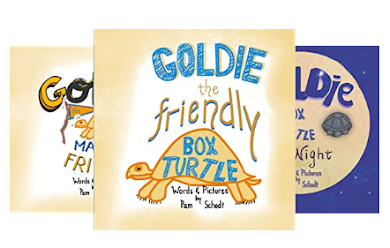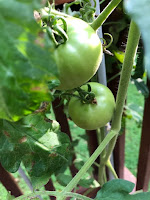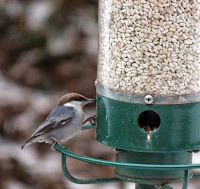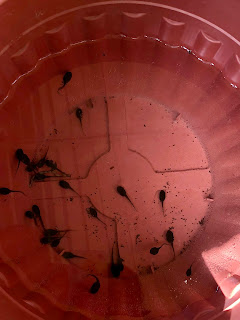 |
| Cherry Tomatoes on Patio Plant |
Vegetable Garden
Since I planted tomatoes and peppers late this year, July presents itself with lots of green tomatoes. I have bunches of cherry tomatoes growing in containers on the deck. Massive caged tomato plants are along the back of the house. Small eggplants have started in this area also. I hope to get good eggplant produce, but recent years have been plagued with the opposite. In the past, aphids have overrun the eggplant so I aggressively treated these with a soap solution this year.
 |
| Cherry Tomato Plants Thrive on Deck |
 |
| Tomato Plants off the Deck |
Across the yard in the traditional vegetable garden, the yellow and zucchini squash are battling with the insects. Jalapeno peppers are producing great, but the green pepper plants are off to a slow start. Several of these plants died after bugs ate most of the leaves..
It is interesting that my zucchini, which has always been a stalwart of the garden, has not produced a single fruit. I photographed the beginnings of one, but haven't seen anything since. The squash bugs have been around for a couple months and I haven't had the heart to use a pesticide. The store-bought yellow squash plants are producing in small numbers.
We're making plans to rest this garden area next year. Because of back problems, I'm to avoid bending, and weeds and grasses have taken over.
 |
| Japanese Beetles on Eggplant Leaves |
 |
| Red-spotted Purple Butterfly on Butterfly Bush Flower |
Flowers in Bloom
The Butterfly Bushes are smelling great and attracting many skippers and swallowtail butterflies. The Hibiscus is blooming and attracting bumble bees. Stargazer lilies continue to bloom.
 |
| Hibiscus in Bloom |
Pests
Japanese Beetles are numerous this year. In the past, they have destroyed Hibiscus blooms and Azalea leaves with their relentless appetites. This year, my gardener neighbors and I have noticed the diversity of plants being attacked by this pest. Butterfly Bush blooms, Crape Myrtle leaves, Strawberry leaves, Cleome blooms, and Asparagus ferns are now on the menu. I collect the clumsy beetles in jars of soap water. It's a chore that can go on all day. It seems I will have to treat the yard in the spring to curb the beetle infestation.
 |
| Sedum Showing Leaf Damage |
The mystery pest of the month has attacked the sedum growing in the front yard. The leaves have been partially removed down the stem in "corn cob" fashion. Is it insect or is it animal?
Thanks for reading my blog post! I hope your gardening is going well. All the best, Pam






























































